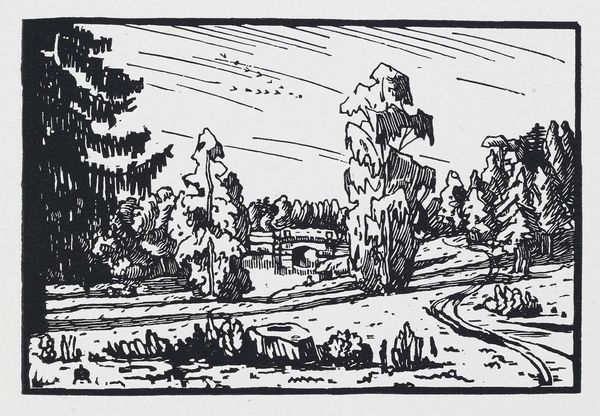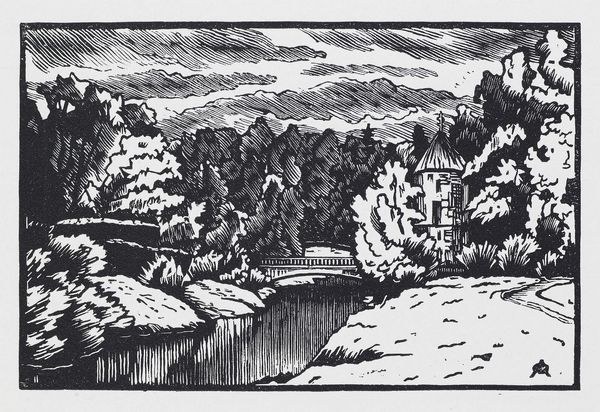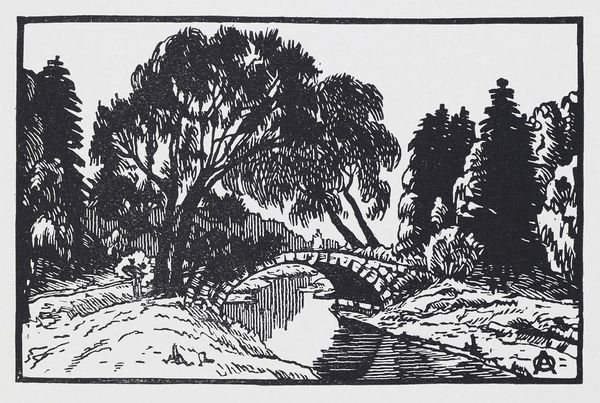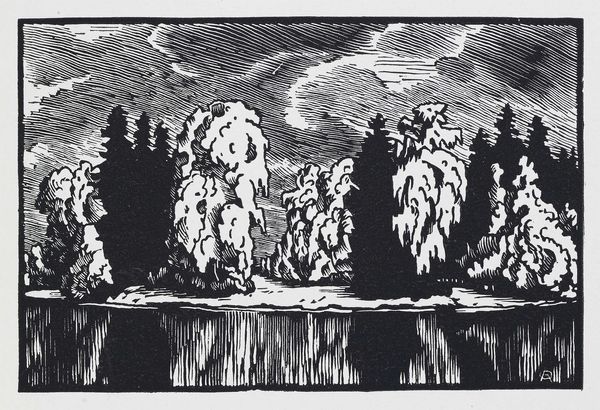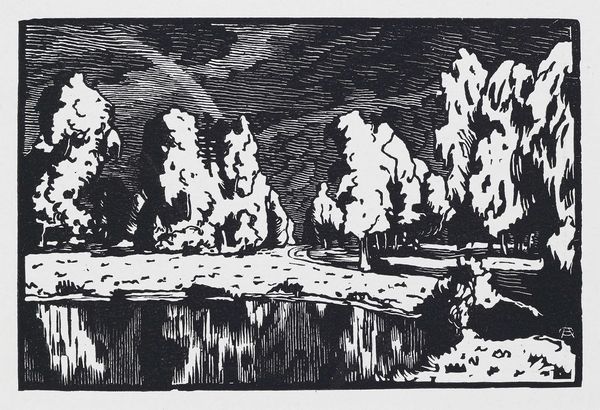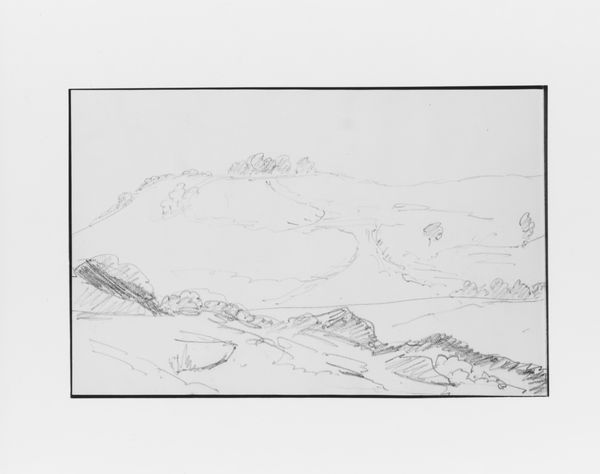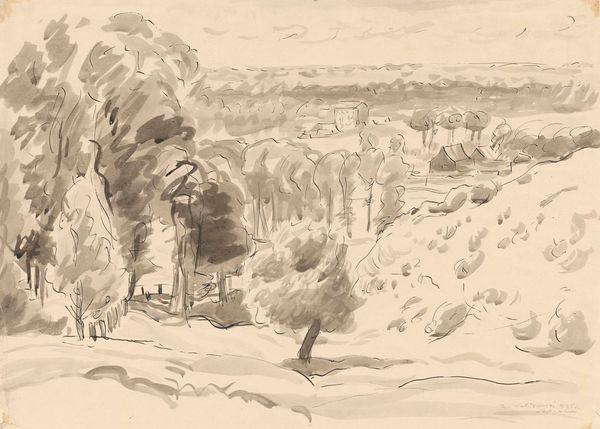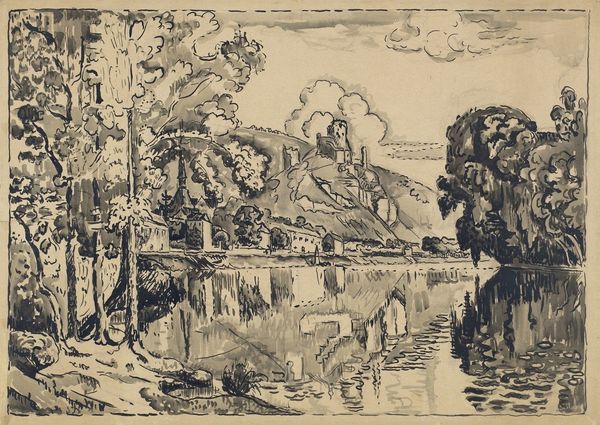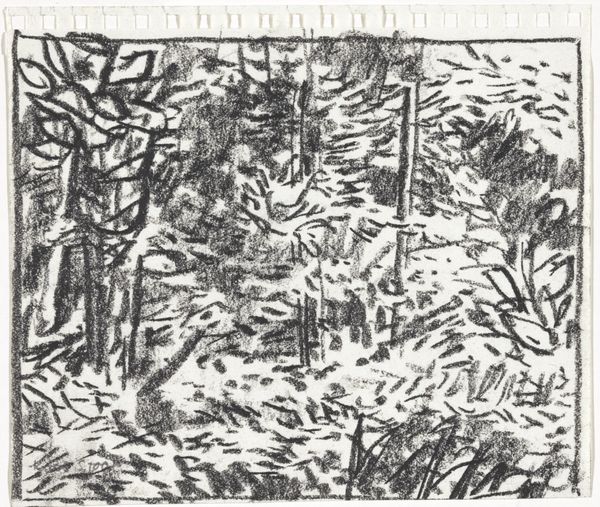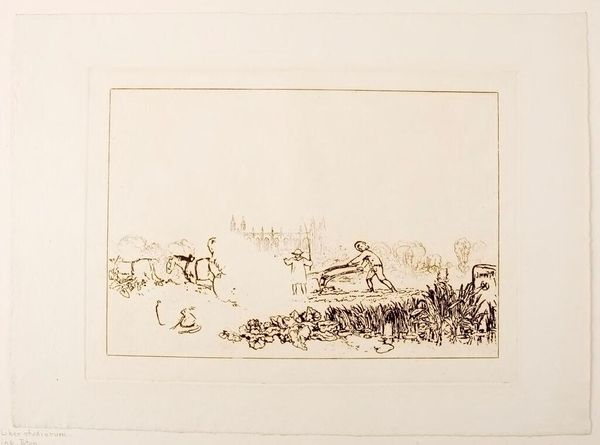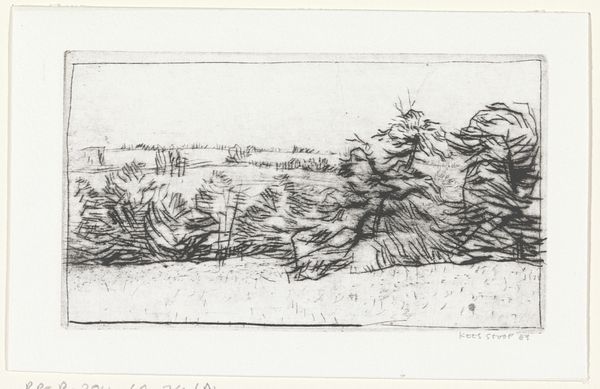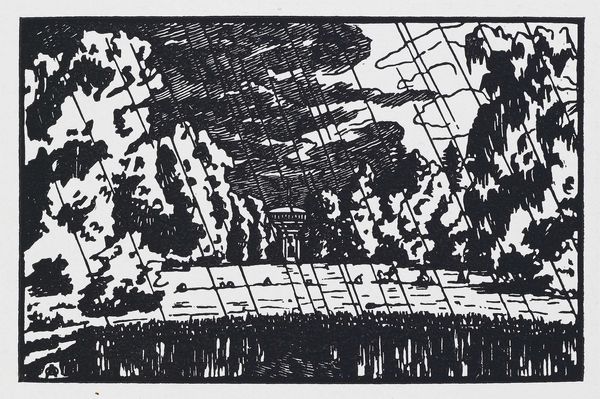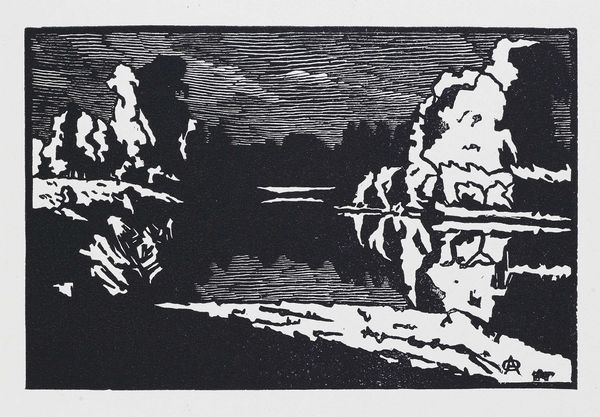
drawing, print, woodcut
#
drawing
#
garden
# print
#
landscape
#
woodcut
#
orientalism
#
line
#
park
#
cityscape
#
realism
Copyright: Public domain US
Curator: This is Anna Ostroumova-Lebedeva's 1923 woodcut, "Trees near the 'Apollo Colonnade.'" It’s a captivating cityscape rendered with bold lines and stark contrast. Editor: Yes, the contrast really draws the eye. The overall effect is quite serene despite the sharp lines. What's your perspective on it? Curator: I’m immediately drawn to the process. Consider the labor involved in producing a woodcut. Ostroumova-Lebedeva would have painstakingly carved away the negative space to create this image. And the limited tonal range highlights her command over the medium; it makes you wonder, how does the material dictate the aesthetic, and vice versa? Editor: That’s fascinating. I hadn’t thought about the physical labor so directly impacting the final image like that. Curator: Exactly! Also, observe how the artist depicts the natural and architectural forms. Notice the way the trees are rendered versus the Colonnade. How does this relate to our understanding of leisure and landscape during this period? Perhaps thinking about the social context of artistic production? Was this made for an elite buyer or mass production? Editor: Well, given it's a print, maybe the artist hoped for wider circulation. It does make me consider the economics involved. Curator: Precisely. Her choice of medium would directly influence the reach and potential consumption of her work. How does the relative ease of printmaking relate to democratic ideals in art, especially during the revolutionary period in Russia? Editor: That connection to broader social ideas really changes how I see the print, it becomes less about just the visual space itself. Curator: It's the interplay of material and method reflecting cultural conditions. Next time you’re looking at a woodcut, maybe think of the process first.
Comments
No comments
Be the first to comment and join the conversation on the ultimate creative platform.
